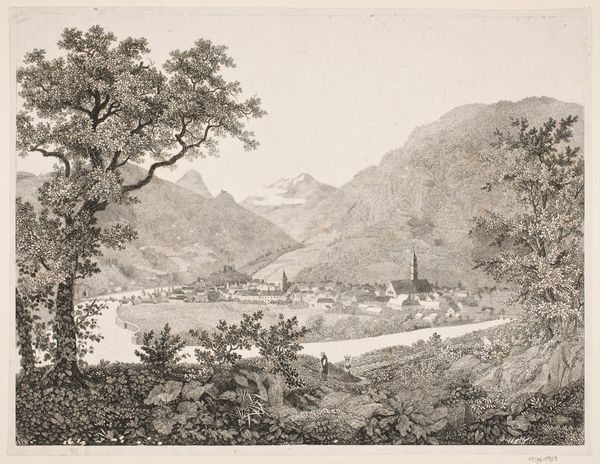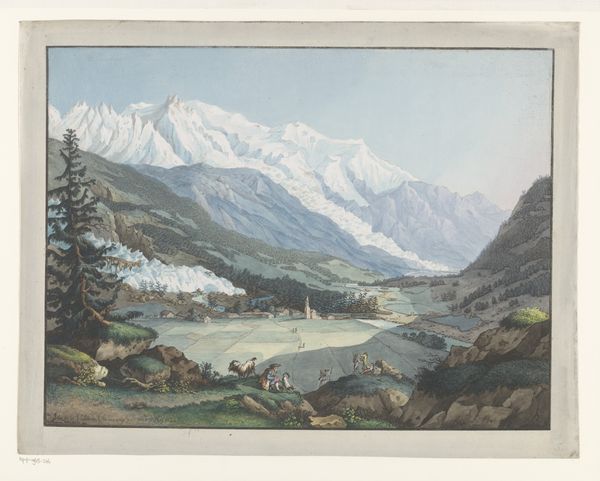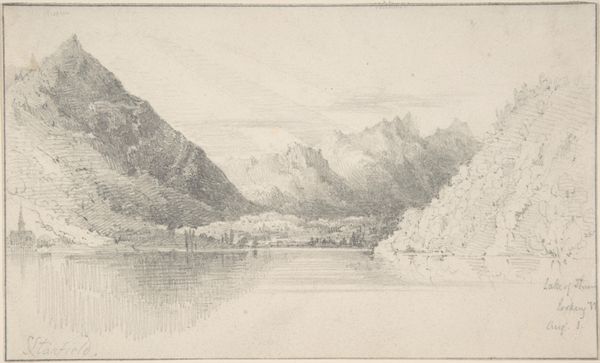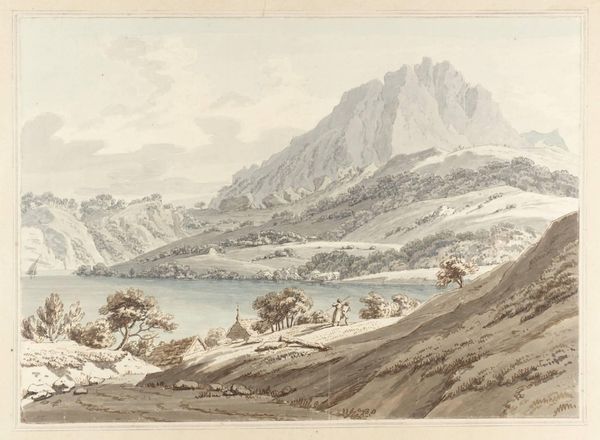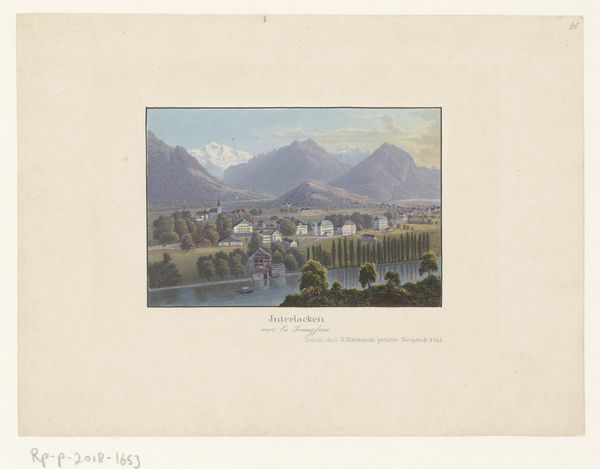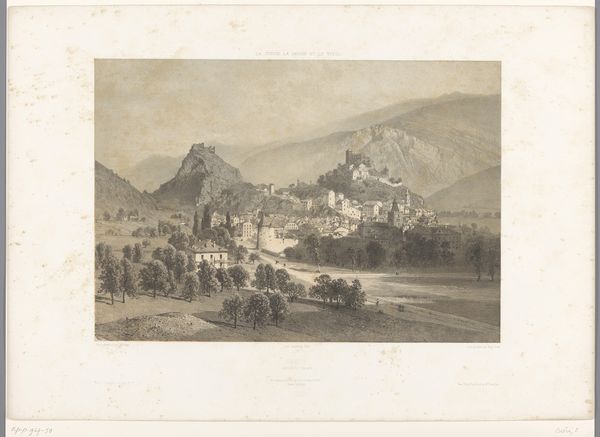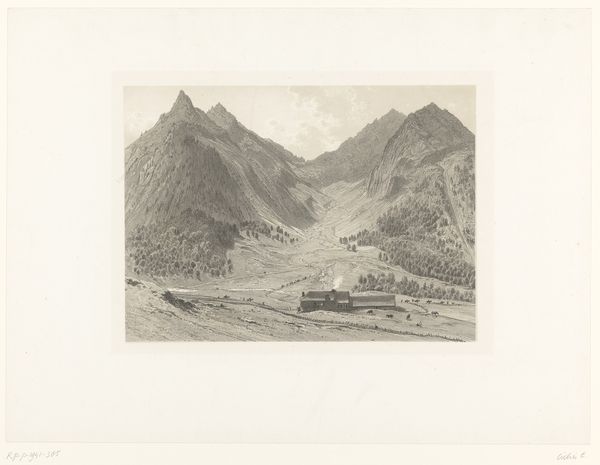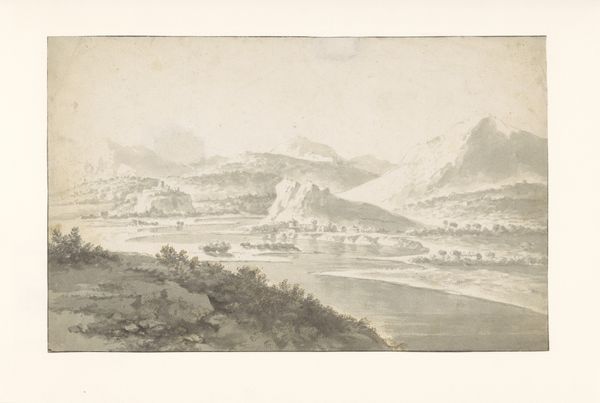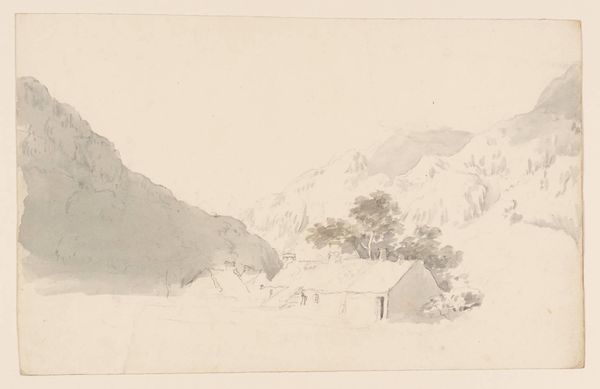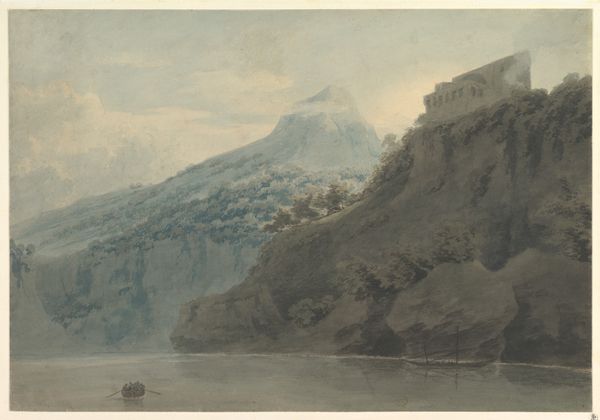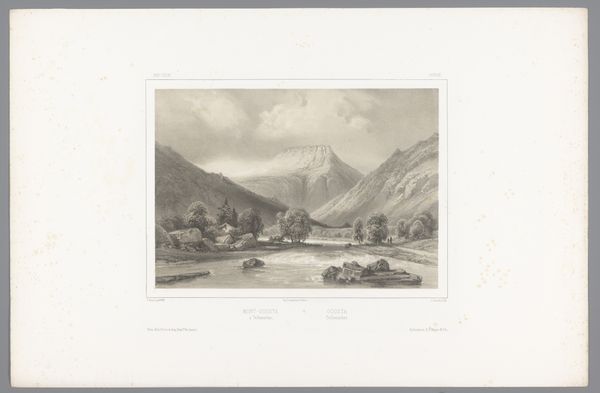
drawing, plein-air, watercolor
#
drawing
#
water colours
#
ink painting
#
plein-air
#
landscape
#
watercolor
#
romanticism
#
cityscape
#
watercolour illustration
Dimensions: Overall: 36.6 x 52.7 cm (14 7/16 x 20 3/4 in.) overall (mat size): 61 x 76.2 cm (24 x 30 in.)
Copyright: National Gallery of Art: CC0 1.0
Editor: Here we have John Robert Cozens's "Cetara on the Gulf of Salerno," created in 1790 using watercolor. It’s a wonderfully composed vista, really pulling you in. I'm curious, what do you see in this piece beyond the surface beauty? Curator: Well, focusing on the materiality, the translucent layering of watercolor creates a sense of atmospheric depth that's crucial to its impact. Cozens was working en plein air, a relatively new practice then. How do you think this direct engagement with the landscape shaped not just the image but also the value placed on landscape painting? Editor: That's interesting, I hadn't considered the plein air aspect so closely. The on-site creation must have influenced his artistic choices regarding detail and scope, imbuing it with authenticity, shifting away from purely idealized depictions. Curator: Precisely. Furthermore, consider the context: the late 18th century, a time of increasing travel and burgeoning tourism among the wealthy. These landscape paintings became commodities, souvenirs of the Grand Tour. This connects directly to the consumption of landscape. Do you think Cozens's technique—his layering of washes and the somewhat muted palette—served a particular purpose in that market? Editor: I suppose the washes create a sense of wistful nostalgia that tourists may want to have a captured version of for when they look back at it, but, at the same time, is it idealizing it less through not being as hyper-real, as capturing only some essence of it? Curator: Exactly. It's about presenting a specific type of experience—picturesque, sublime but safe. The means of production - his materials, travel, and patronage – dictated what and how he painted, and who got to possess it. It really challenges this notion of fine art for fine art’s sake and instead makes us confront questions about accessibility and ownership in the art market. Editor: Thinking about it this way changes how I see not only Cozens's work, but also the broader context of landscape painting's purpose and how they engage with emerging economic structures.
Comments
No comments
Be the first to comment and join the conversation on the ultimate creative platform.
